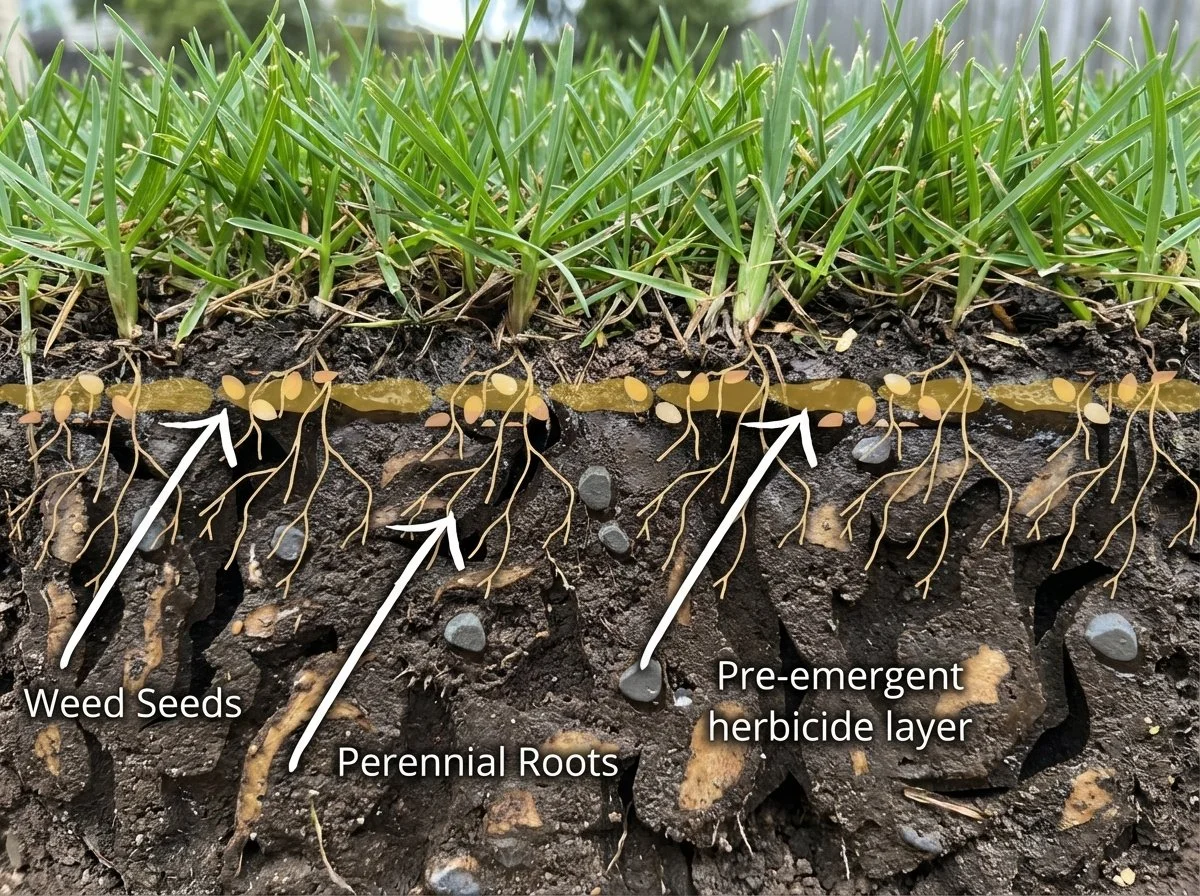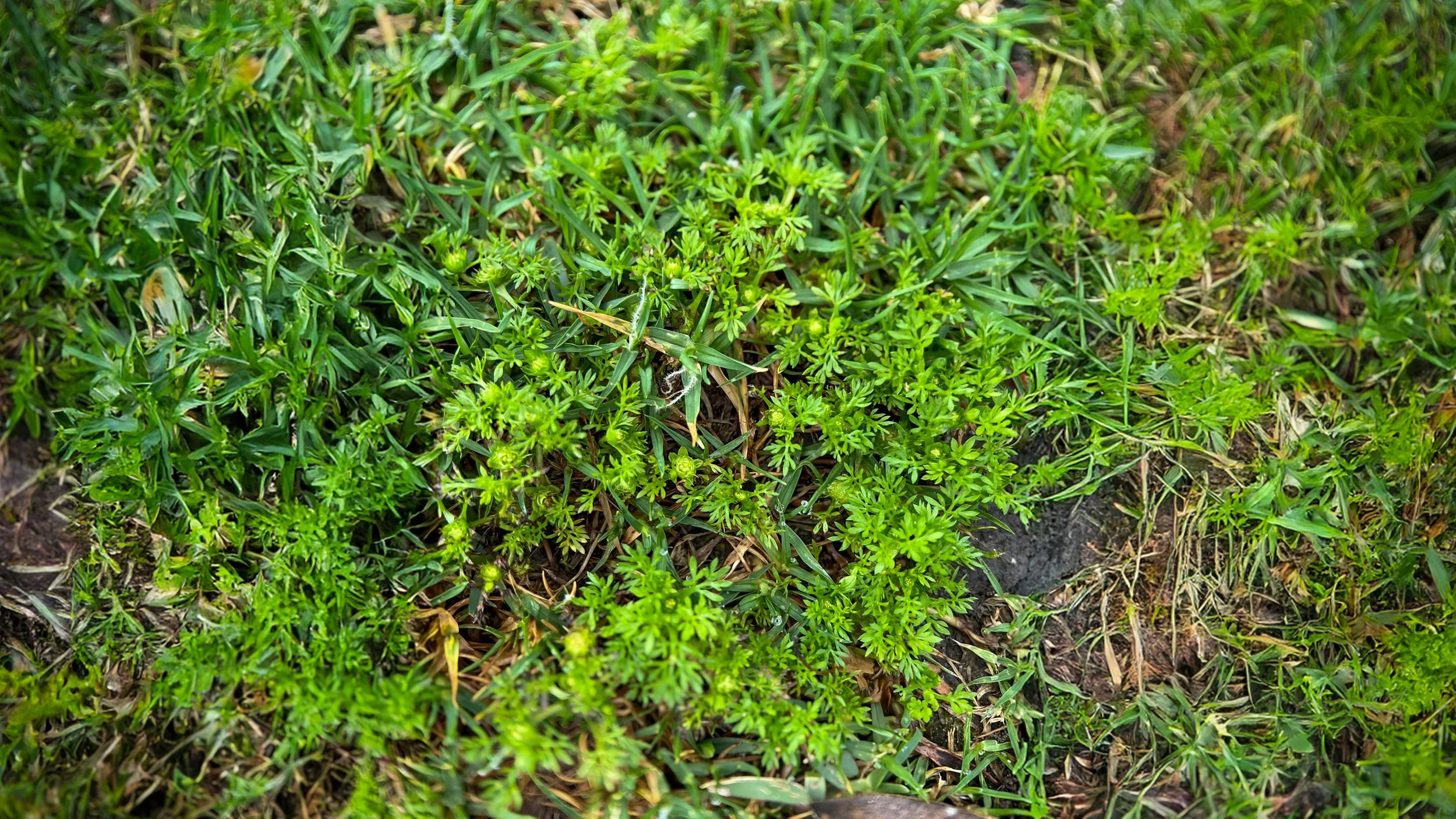Lawn Care for Shady Canberra Lawns: My Guide to Healthier Grass in Low Light
G’day, Nikolai here from The Lawn Firm. One of the most common problems I see in Canberra is weak, patchy grass in shade, under trees, beside fences, and on the south side of homes. The good news is you can improve most shady lawns with a clear plan. This guide walks through how I assess shade, what I change in the lawn care program, and when I suggest new turf or a different groundcover.
Why grass struggles in shade
Grass needs light, water, air, and nutrients. Shade reduces at least two of those:
Less sunlight for growth and recovery
More competition from tree roots
Slower drying after rain or watering, which raises disease risk
In Canberra, winter shade is even harder because the sun sits lower. Lawns that cope in summer often decline through winter and early spring.
Step 1: Work out what kind of shade you have
I always start here. Not all shade is the same.
Full shade
Less than 2–3 hours of direct light a day
Under dense trees or close to high walls
Most warm-season grasses will thin out in these spots
Dappled shade
Light moves through tree canopies
Patches of sun and shade over the day
Many lawns can still work here with the right care
Part shade
Morning or afternoon sun for 3–5 hours
Often on the east or west side of the house
This is the easiest shade situation to improve
I often mark a few spots and check them at breakfast, lunch, and late afternoon to get a real picture.
Step 2: Decide if grass is realistic
I’m honest with clients about this.
In deep, permanent shade, grass will never thrive. It will need constant repair. In those areas I may suggest a different groundcover, mulch, or a garden bed.
In part shade or dappled shade, a lawn can work, but it needs a different program from the sunny areas.
The goal is not a bowling green under a pine tree. The goal is healthy, honest coverage that suits the light you have.
Step 3: Choose grass that suits Canberra shade
You may already have turf in place. If we renovate or overseed, I lean to:
Buffalo in shaded areas
Handles shade better than Kikuyu and Couch
Good for backyards with fences and trees
Tall fescue in cold, shaded spots
Works well in cooler areas and on southern sides
Needs steady water and feed but copes with low light
Kikuyu or Couch for the sunny parts
Great recovery and wear tolerance
I keep these for open, full-sun zones
We do not always rip out existing turf. Often I will boost shade-friendly species into weak areas over time.
Step 4: Adjust mowing in shade
Mowing practice is one of the biggest levers.
Raise the mowing height
In shade, I keep the grass a bit longer so more leaf can catch light.
Never scalp
One heavy cut can set a shady patch back for weeks.
Sharpen the blades
Clean cuts heal faster and reduce disease risk in slow-drying areas.
If you mow your own lawn, set a slightly higher setting for shaded zones or mow them less aggressively.
Step 5: Change how you water shaded lawns
Shaded patches stay wet longer. That changes how I water.
Water deeply, less often
I match watering to soil and season, not to habit.
Avoid late evening watering
Shade plus long leaf wetness encourages disease.
Check soil, not just surface
I use a screwdriver or small spade to see if it is dry below the surface.
In many shaded Canberra lawns, I reduce watering compared with sunny areas, not increase it.
Step 6: Feed, but do not force
Shaded lawns still need nutrients, but they cannot use big surges well.
I use steady, seasonal fertilising, not heavy nitrogen blasts.
I give slightly lighter rates in deep shade than in full sun.
I often use fertilising alongside core aeration and wetting agents so nutrients reach the roots.
The aim is slow, steady growth that matches the light, not soft, weak growth that flops over.
Step 7: Deal with tree roots and leaf litter
Trees are important in Canberra yards, but they do compete with lawns.
Roots:
Tree roots pull water and nutrients away from grass.
I avoid aggressive root cutting near tree trunks.
Instead I work the soil profile, aeration, wetting agent, and light, regular feeding, to help the lawn cope.
Leaves:
Thick leaf layers block light and hold moisture.
I clear leaves often in autumn and winter on shady lawns.
A light mulch pass with the mower is fine, but heavy mats need to go.
Step 8: Improve the soil under shade
Many shaded lawns sit on compacted clay or old building fill. I often see this around new builds and side yards.
My go-to steps:
Core aeration in autumn or spring to open the soil
Wetting agent in dry, hydrophobic areas
Light top dressing (5–8 mm) with a suitable blend to level and improve structure
Overseeding thin patches once the soil is open
These steps are the same as for sunny lawns, but I time and dose them to match slower shade growth.
Step 9: Manage shade weeds and moss
Shady, thin turf often comes with broadleaf weeds, winter grass, and moss.
I focus on strengthening the grass first, more light, better soil, right mowing.
I then use targeted weed control where needed.
In very dark, damp spots that stay mossy, I may suggest moving away from lawn in that section.
Weed control works best when the turf is strong enough to close the gaps after treatment.
Step 10: Set realistic expectations and a simple schedule
A shady Canberra lawn can look great, but it will not behave like a full-sun sports field. I set clear expectations with clients:
Growth will be slower.
Wear and tear from kids and dogs will show faster.
The area may need more regular overseeding and light top dressing than the sunny parts.
With the right plan, this becomes a simple annual routine, not a constant repair job.
DIY or call The Lawn Firm?
You can lift mowing height and change watering yourself. You can also clear leaves and watch how the light moves.
Where I add the most value is in:
Assessing how much shade is too much for lawn
Picking the right grass mix for your yard
Lining up aeration, feeding, wetting agents, overseeding, and top dressing in the right order
Managing weeds, moss, and disease that often appear in shaded zones
That turns a patchy, frustrating area into a lawn that holds its own through Canberra’s seasons.









